A successful SAM renewal requires proactive planning and meticulous execution. Begin the process 9-12 months before expiration, establish a centralized contract database with automated alerts, and create clear renewal metrics. Implement standardized documentation templates, assign milestone accountability, and conduct regular compliance audits. Form a cross-functional renewal committee, utilize SAM’s validation tools, develop a negotiation playbook, and perform competitive market analysis. These strategies prevent registration lapses and maintain continuous eligibility for federal contracting opportunities.
10 Expert Tips for a Smooth SAM Renewal Process
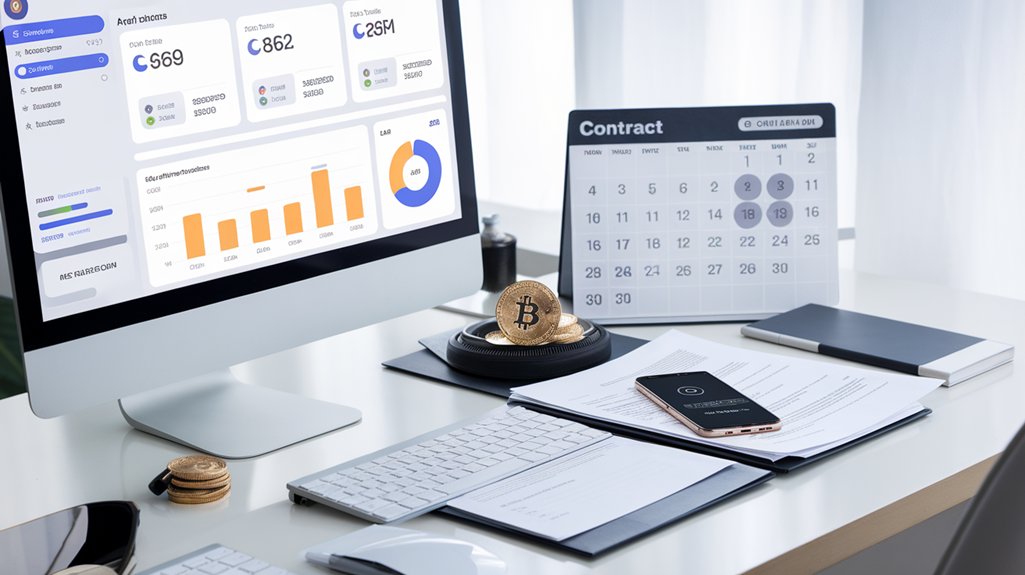
When approaching SAM renewal, businesses should establish a systematic process that addresses both fundamental requirements and potential complications. Effective compliance strategies begin with reviewing current SAM standards, ensuring alignment with federal requirements, and verifying that all entity information matches IRS records precisely.
Documentation organization represents a critical success factor in renewal efficiency. Procurement specialists recommend creating a dedicated folder structure containing tax identification documents, banking information for EFT validation, and notarized authorization letters before beginning the online process. A valid SAM registration is absolutely mandatory for any contractor seeking to bid on federal opportunities. Having an active Unique Entity Identifier is essential for accurate tracking and transparency in the federal contracting system. Strategic planning ensures continued eligibility for federal contracts and grants throughout the renewal process.
Organize critical documentation in dedicated folders for tax IDs, banking information, and authorization letters before initiating SAM renewal.
To maximize success rates:
- Start renewal procedures 90 days before expiration
- Schedule submissions during low-traffic system periods
- Implement multi-stage review checkpoints at 60/30/15 days
- Utilize SAM.gov’s built-in validation tools and preview functions
Companies that leverage official resources like the Federal Service Desk and step-by-screen guides typically experience fewer validation errors and shorter processing times compared to those managing renewals without preparation.
Start Renewal Conversations 9-12 Months in Advance

While the standard renewal period begins 90 days before expiration, organizations with sophisticated federal contracting operations now recognize that SAM renewal preparation should begin much earlier.
Implementing effective renewal timeline strategies requires foresight and thorough planning to avoid registration lapses that could disrupt contract eligibility.
Successful stakeholder engagement techniques include:
- Conducting quarterly internal audits to identify discrepancies between current business operations and SAM registration details
- Establishing a cross-functional renewal committee with representatives from legal, finance, and operations departments
- Creating a documented timeline with clear ownership and accountability for each renewal milestone
Organizations should designate a renewal lead responsible for coordinating the entire process, from initial data gathering through final submission.
This approach transforms SAM renewal from a reactive compliance exercise into a strategic business process that supports continuous federal contracting operations without interruption.
Setting reminders for key deadlines helps organizations maintain their SAM Unique Entity Identifier and prevent missed renewal opportunities that could result in disqualification from federal contracts.
Regular monitoring of notifications and alerts every quarter enhances account integrity and ensures your business maintains eligibility for federal opportunities.
Verifying that all entity information is up-to-date during renewal is essential for continued compliance with federal requirements.
Build a Centralized Contract Database With Automated Alerts
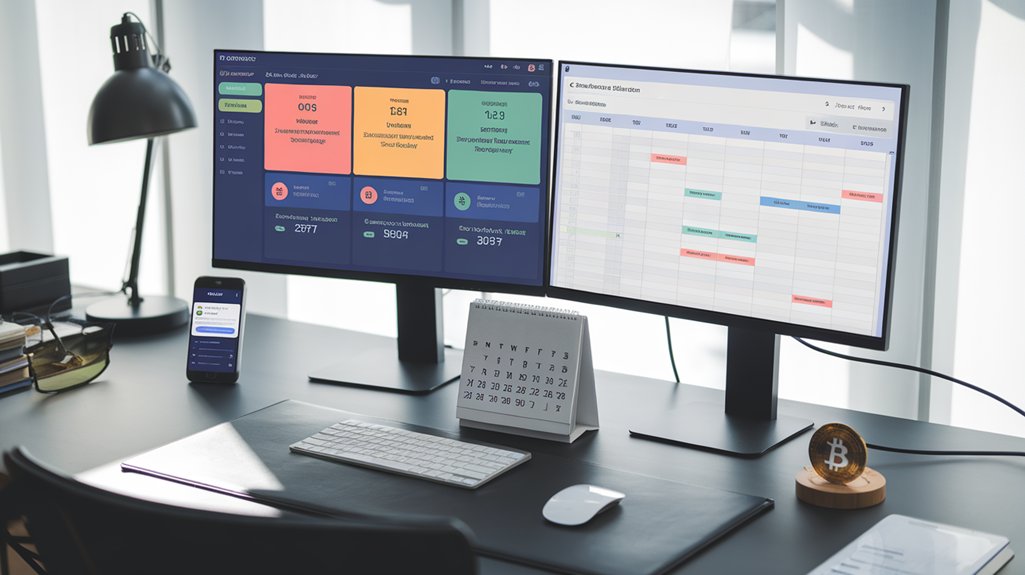
Creating a centralized contract database represents a foundational step for organizations seeking to streamline their SAM renewal processes. This system should incorporate robust data management protocols while guaranteeing compatibility with SAM.gov and other federal platforms through standardized APIs.
A centralized contract database with robust protocols forms the cornerstone of efficient SAM renewal management.
Effective contract categorization enhances searchability and organization, allowing teams to quickly locate agreements based on type, value, or expiration date. When coupled with alert customization features, the system becomes proactive rather than reactive. Organizations can configure notifications based on priority levels, guaranteeing high-value contracts receive appropriate attention before renewal deadlines. As a best practice, initiate your SAM renewal at least 90 days before expiration to prevent potential service interruptions or penalties. The comprehensive checklist available on SAM.gov helps ensure all required documentation is prepared ahead of time. Regular renewals ensure your business maintains continuous eligibility throughout the entire contract lifecycle.
For ideal performance, the database should include:
- Secure access controls to maintain data integrity
- Regular backup protocols to prevent information loss
- Real-time synchronization with federal systems
- Data validation processes to confirm accuracy
These elements create a self-sustaining system that considerably reduces administrative burden while maximizing contract renewal success rates.
Establish Clear Renewal Decision Criteria and Metrics
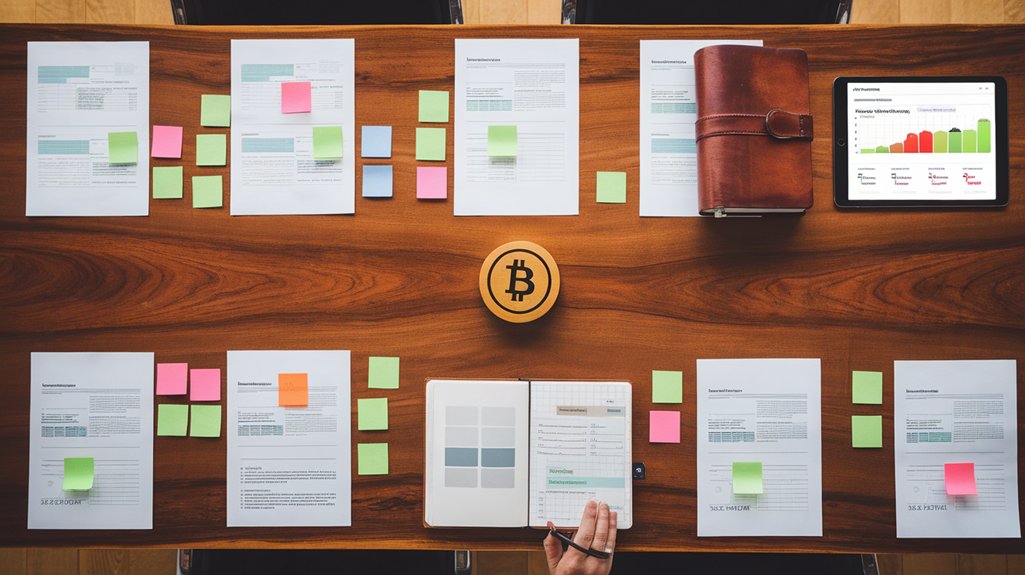
Effective SAM renewals depend not just on having the right systems in place, but also on establishing clear decision frameworks that guide the renewal process. Organizations must develop specific renewal criteria centered on regulatory adherence, data accuracy, and compliance status to guarantee successful registration maintenance. As the recent GAO decision on TLS Joint Venture demonstrates, even a temporary registration lapse can result in disqualification from contract awards. The GAO’s findings clearly establish that FAR 52.204-7 requires continuous registration throughout the entire procurement process. Maintaining timely renewal is essential for preserving eligibility for federal contract opportunities without interruption.
Success metrics for SAM renewals should focus on quantifiable outcomes that demonstrate effectiveness:
- Registration continuity – Tracking the percentage of time your business maintains active status without lapses
- Error reduction rates – Measuring the decrease in application errors that could delay approval
- Processing efficiency – Monitoring the time between submission and approval compared to industry averages
Companies that implement structured renewal frameworks experience fewer registration gaps and compliance issues.
Create a Standardized Performance Evaluation Framework

Organizations that implement a standardized performance evaluation framework for SAM renewals achieve consistently higher compliance rates and operational efficiency. This framework should align evaluation metrics with organizational objectives by mapping competencies to strategic goals and focusing on measurable outcomes.
Effective frameworks incorporate competency-based rating systems with clearly defined performance criteria for each level, reducing subjectivity in assessments. When developing evaluation metrics, assign appropriate weightings based on role-specific requirements and organizational priorities.
Clear evaluation criteria and weighted metrics eliminate subjectivity while aligning assessments with core organizational priorities.
Integration with existing workflow systems is essential, enabling automated reminders for review deadlines and digital approval processes. Regular compliance audits help ensure your organization maintains eligibility for government contracting opportunities. Organizations should guarantee their framework maintains compliance with federal regulations, including OPM guidelines and relevant statutes. Some frameworks now include components to measure how employees support policy priorities as required by recent OPM guidance.
Data-driven analysis supports continuous improvement, allowing teams to identify training gaps through competency assessments and refine criteria based on historical performance data. This analytical approach helps organizations correlate individual performance directly to SAM renewal success rates.
Develop Role-Based Approval Workflows for Swift Processing
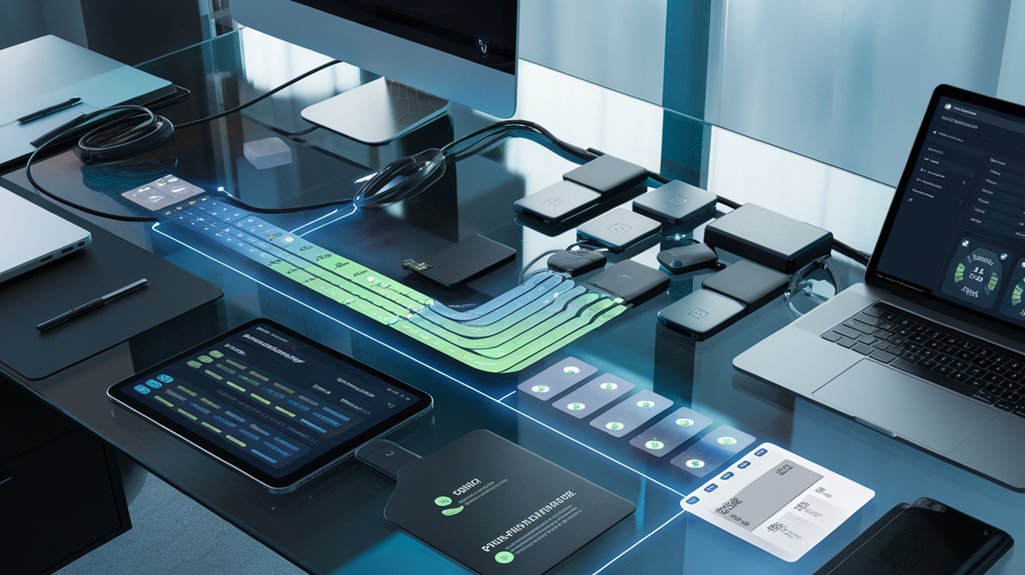
Role-based approval workflows serve as the backbone of efficient SAM renewal processing, dramatically reducing bottlenecks and administrative delays. Organizations that implement structured approval hierarchies with clear role clarity experience up to 70% faster processing times compared to those with ambiguous approval chains.
The key lies in mapping specific responsibilities to designated roles within the SAM registration system. Effective workflows standardize procedures by establishing a defined approval hierarchy, where each stakeholder understands their responsibilities and authority levels. This systematic approach guarantees that renewal requests move through the system with minimal friction. Proper workflows facilitate the validation and updating of representations and certifications, typically requiring 3-7 days for complete revalidation. Maintaining a current SAM registration status is essential for continued eligibility for federal contracts and access to government funding opportunities.
- Eliminate frustrating approval delays through automated notifications that alert approvers when action is required.
- Prevent costly registration lapses with streamlined processes that prioritize time-sensitive renewals.
- Reduce staff workload by removing redundant approval steps that waste valuable time.
Phased implementation allows organizations to test and refine these workflows without disrupting ongoing operations.
Prepare a Strategic Negotiation Playbook Before Discussions Begin

Before entering any SAM renewal discussions, procurement teams should develop a thorough negotiation playbook that outlines specific strategies, talking points, and fallback positions. This document serves as a roadmap that keeps negotiations aligned with organizational objectives while preventing on-the-spot compromises that could be disadvantageous.
The playbook should include extensive pricing benchmarks, competitor offerings, and value assessment metrics to strengthen negotiation tactics. Teams must analyze current feature utilization and identify opportunities for cost optimization or service upgrades. Many organizations now face the challenge of managing one renewal daily across their SaaS portfolio, making preparation even more crucial. Establishing must-have terms that represent non-negotiable requirements helps maintain control throughout the negotiation process.
Stakeholder alignment is critical—ensure all decision-makers agree on priorities and acceptable terms before vendor engagement begins. Effective playbooks also anticipate vendor counterarguments and prepare data-driven responses. Regular SAM re-certification is essential to maintain eligibility for federal contracts and ensure compliance with government regulations.
Internal alignment before external engagement creates a unified negotiation front that vendors cannot easily divide or conquer.
For multi-year agreements, teams should calculate total cost implications and establish clear escalation thresholds. By documenting best-case, acceptable, and walk-away scenarios, organizations establish firm boundaries that prevent rushed decisions during time-sensitive renewal periods.
Leverage Template-Based Documentation for Consistency
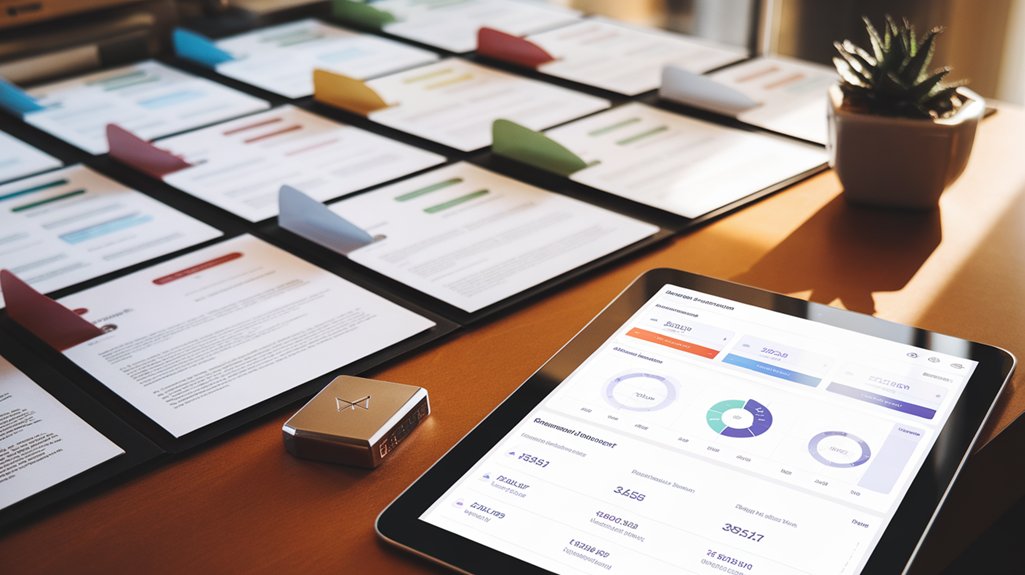
While standardizing documentation through templates might seem like a minor consideration, this approach represents a foundational element of successful SAM renewal processes. Template efficiency considerably reduces errors by eliminating manual entry inconsistencies across renewal cycles. Organizations implementing structured templates report faster review times and fewer rejections due to documentation accuracy.
Core components of effective SAM renewal templates include:
- Entity validation sections with standardized fields for UEI, TIN, and legal business names
- Compliance documentation frameworks that highlight expiration dates and certification requirements
- Change logs that maintain version control for tracking modifications to business structures
Templates should incorporate field-specific formatting rules and automated validation checks to prevent common submission errors.
Companies can further enhance template functionality by implementing quarterly reviews to align with updated FAR clauses and SAM.gov system changes, ensuring all documentation remains current with federal regulations.
Maintaining active registration status is critical for continued eligibility in federal contracts and to prevent disruption in receiving government funds.
Implement Milestone Tracking With Accountability Assignments
Beyond template standardization, successful SAM renewals require meticulous milestone tracking systems with clear accountability. Organizations should establish 120/90/60/30-day renewal alerts using calendar integrations that sync with SAM.gov processing timelines, preventing costly deadline oversights.
Effective milestone reminders must prioritize critical action items at each phase while flagging compliance dependencies that require third-party validation. This structured approach should include role-based assignments where specific team members take ownership of critical renewal components:
Renewal success hinges on milestone reminders with clear ownership across validated compliance checkpoints.
- Designate primary and secondary approvers for financial submissions
- Assign compliance officers to review FAR alignment at key milestones
- Delegate banking verification to finance team members with proper authority
Accountability assignments must be formalized through RACI matrices that clearly delineate responsibilities across departments. Starting the renewal process early to address unforeseen issues helps maintain continuous eligibility for federal contracts and grants.
Organizations should implement auditable tracking mechanisms that document all activities with timestamps, ensuring cross-departmental accountability through mandatory weekly touchpoints between SAM liaisons, contracts teams, and finance leaders. Automated reminders and technology integrations can streamline the process of document preparation and meeting renewal deadlines with greater efficiency. Neglecting regular updates to SAM registration may result in serious consequences for organizations seeking federal opportunities.
Conduct Competitive Market Analysis for Pricing Leverage

Leveraging competitive market analysis serves as an essential foundation for achieving pricing advantages during SAM renewals. Organizations must identify key competitors within their serviceable available market (SAM) to determine ideal market positioning and uncover negotiation opportunities.
This analysis should examine competitors’ pricing strategies, product differentiation factors, and potential weaknesses that can be leveraged during renewal discussions. Understanding the complete serviceable available market helps companies realistically assess which market segments they can effectively target based on their current business model. Segmenting your target market by industry, company size, and technology usage provides clearer strategic focus when approaching renewal negotiations. Remember that accurate documentation is critical during the renewal process, as errors can result in significant delays just as they can during initial registration.
Effective competitive analysis creates several advantages:
- Reveals pricing gaps in the market that can justify maintaining current rates or requesting adjustments based on demonstrated value
- Highlights unique selling propositions that substantiate competitive pricing compared to similar offerings in the marketplace
- Exposes competitor weaknesses that strengthen negotiating position during renewal conversations
Frequently Asked Questions
How Do Force Majeure Clauses Affect SAM Renewal Negotiations?
Force majeure implications greatly impact SAM renewal negotiations, as parties must carefully define qualifying events like cyberattacks, government sanctions, and service disruptions.
Negotiation strategies should focus on updating force majeure terms to address emerging risks, including AI failures and cloud infrastructure outages.
Organizations typically renegotiate liability caps, service credits, and mitigation obligations during renewals.
The trend shows 63% of tech contract renewals now include cybersecurity incidents as qualifying events, reflecting evolving business continuity concerns.
What Are Best Practices for Transitioning Between SAM Providers?
Shifting between SAM providers requires thorough provider evaluation and extensive transition planning. Organizations should review credentials, experience, and compliance expertise of potential providers while establishing clear timelines for the changeover process.
Regular communication between outgoing and incoming providers prevents information gaps. Companies should guarantee complete documentation transfer, maintain profile continuity, and implement staff training programs during the shift.
Designating specific roles for managing different aspects of the transition helps mitigate risks and guarantees operational continuity.
How Can We Integrate SAM Renewal With Cloud Licensing Optimization?
Organizations can integrate SAM renewal with cloud licensing optimization by implementing a thorough licensing strategy that addresses both on-premises and cloud environments.
This approach should include regular assessment of cloud cost metrics against actual usage patterns, automated tracking of subscription renewals, and centralized management of all licenses.
Teams should establish clear governance processes that align cloud procurement with enterprise-wide SAM policies, ensuring visibility across all environments and preventing unnecessary spending on underutilized resources.
What Security Certifications Should We Verify During SAM Renewal?
During SAM renewal, organizations should verify several critical security certifications to guarantee compliance.
Key certifications include CMMC for DoD contracts, FAR 52.204-21 for federal contract information safeguarding, and NIST SP 800-171 for controlled unclassified information protection.
Companies should also confirm FedRAMP authorization for cloud services and ITAR compliance for defense-related data.
Certification verification should additionally cover contingency planning documentation, incident reporting protocols, and supply chain risk management credentials to maintain security compliance.
How Do Regulatory Changes Impact International SAM Contract Renewals?
Regulatory changes greatly impact international SAM contract renewals through new compliance requirements.
International contractors must adapt to the two-phase FAR implementation process, which modernizes procurement regulations. These changes affect documentation requirements, reporting obligations, and sustainable procurement practices.
Contractors handling international contracts need to invest in updated compliance frameworks, verify their UEI and Tax ID information, and begin renewal processes 60-90 days before expiration to maintain eligibility and navigate the evolving regulatory landscape effectively.